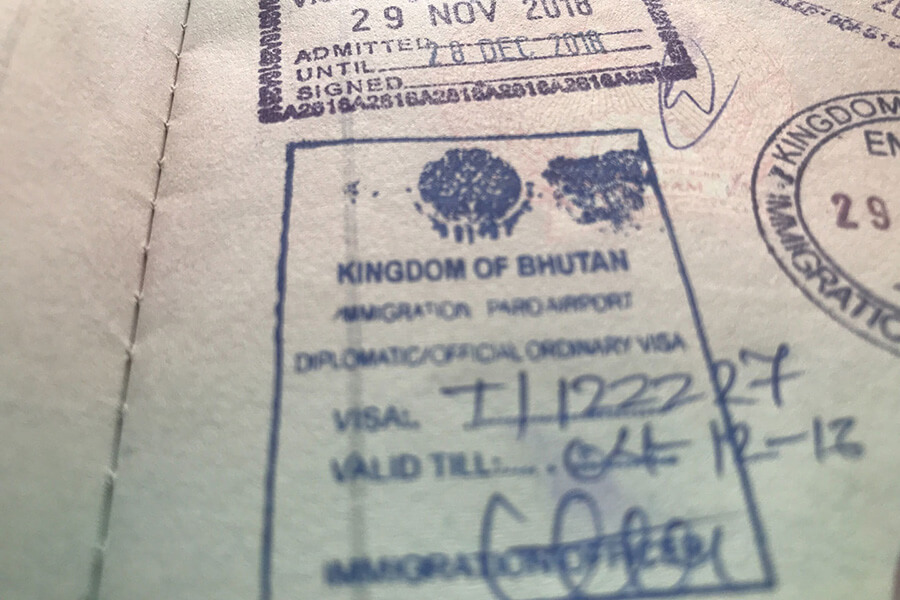Travel
Attention
All visitors require a visa before traveling to Bhutan. In agreement with the Bhutan Tourism Department, all FAB23 Bhutan participants will NOT have to pay a US$200 per day fee. To start your visa application process, you must first purchase your FAB23 Bhutan Ticket and then submit the FAB23 Bhutan Visa Application Form. You must do this process at least one month before arrival at the event.
Visa
To apply for a visa online you will need:
- To purchase your FAB23 Bhutan ticket
- A digital copy of a valid passport
- A recent digital passport photo
- Arrival and departure dates
Visa processing time: 10-12 working days. If we haven't gotten back to you 30 days after the day of submission, please reach out to us at fabevents[at]fabfoundation.org
Want to stay updated with the latest information on travel, visas and more? Subscribe here
Travel Operators
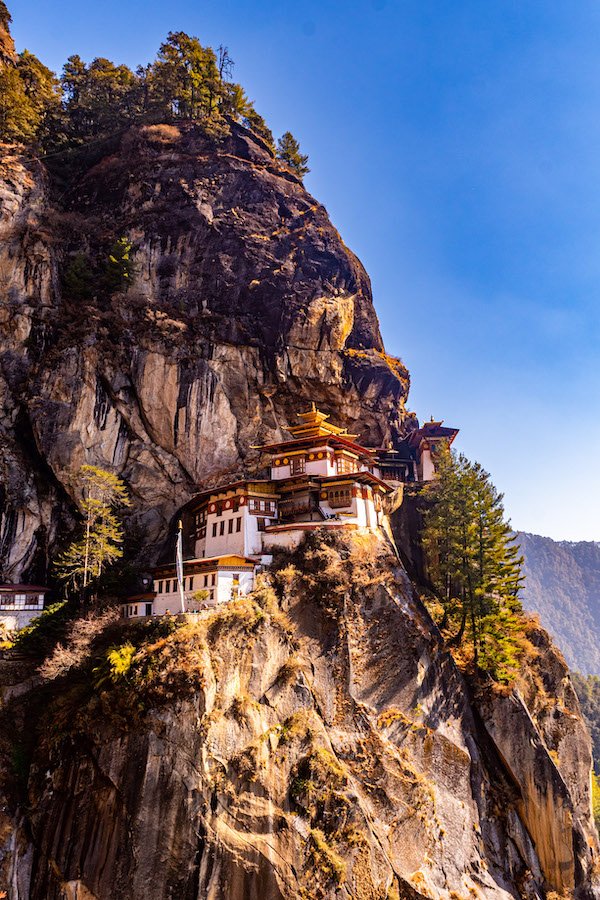
-
Etho Metho Tours & Treks
Website
email: karma@ethometho.com.bt
Whatsapp: +975 17126006 -
MyBhutan
Website
email: contact@mybhutan.com -
Bhutan Travelers
Website
email: info@bhutantravelers.com
Whatsapp: +975 77845366 -
Bhutan Future Travels and Tours
Website
Whatsapp: +975 17810251 -
Aja Tours and Treks
Website
Whatsapp: +975 17112468
email: gyaltshen@gmail.com -
Montane Bhutan
Website
Whatsapp: +97517552373
email: swangyeltshering@gmail.com -
Neat Bhutan
Website
Whatsapp +97517457461 / +97577111754
Email: neatbhutan.2@gmail.com
Travel Facts to Bhutan
General Facts
Capital: Thimphu
Currency: Ngultrum
Language: Dzongkha
National Dress: Gho & Kira
1. TAKTSANG MONASTERY
The Number 1 on our list is the Paro Taktsang. Paro is a small valley town about 40 minutes away from Thimphu. It is a popular spot amongst both tourists and locals. It stands at 2,950 meters above the sea level, clinging to an 800 meter tall rock. The hike to Taktsang is about 2-3 hours long. It is advisable to walk slowly to adjust to the changing altitude. The picture below does not do justice to the view and the experience of seeing Taktsang after a long hike. 
2. BUDDHA DORDENMA
Also known as the Buddha Point, this popular spot can be seen from the main Thimphu town! The 51.5-meter bronze statue is three stories tall with several chapels. It is considered to be one of the tallest Buddha statues in the world. It takes a rough 10-15 min drive from the main town to reach and is one of the most amazing viewpoints. 
3. WATER RAFTING
Located in Punakha, about 2-hour drive away from Thimphu. Only a few rivers are open for rafting considering their safe and easy access. The Pho Chu is a approx. 16km course with about 15 rapids of class 2 – 4. It's the most popular spot for rafting in Bhutan, followed by the Mo Chu river with a 10Km course comprising around 10 rapids with 2- 2+ rapids. 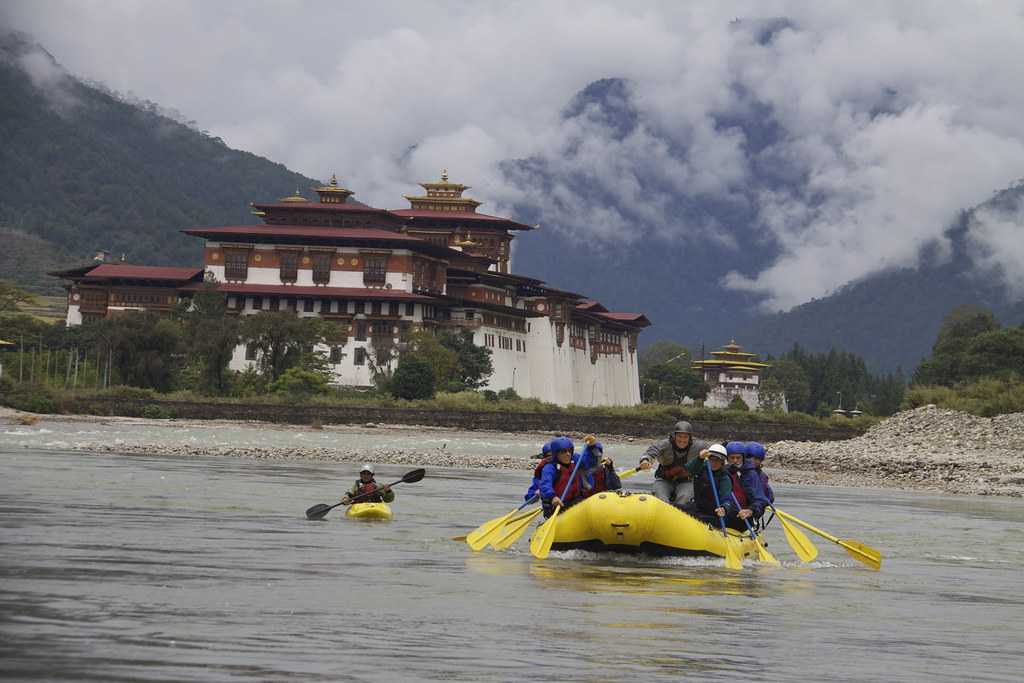
4. HOT STONE BATHS
A traditional hot stone bath is a must when you come to Bhutan! Infused with traditional Tibetan and other Himalayan herbs, this bath is believed to have several healing properties. The bath consists of a stone being left in a fire until it gets hot and is then put into the water for use. 
If you want to indulge in a typical Bhutanese Dining experience, make sure you visit the Babesa Village Restuarant located in Thimphu.
Some popular Bhutanese dishes are:
- Kewa Datsi (Potato and cheese)
- Shakam Datsi (Air dried beef with cheese and red chilis)
- Jaju (Jajus are made from various vegetables and greens)
Weather
For July, a typical day will range from a high of 65°F (18°C) to a low of 51°F (10°C). It is advisable to carry an umbrella for rainy days or for the sun.
Despite the challenges, there are some positive aspects to traveling to Bhutan during July. The landscape is lush and green, with fruits ripening on the trees, and various tshechus (Buddhist festivals) are held throughout the country, such as the renowned Nimalung Tshechu in Bumthang, featuring traditional masked dances and the unveiling of a huge scroll painting.
Getting around: Tips
Greetings: Bhutanese people may shake hands with a foreigner when offered one. However, like in many Asian cultures, Bhutanese bow their heads/backs instead of shaking their hands as a way to greet. A common phrase to use is “Kuzuzangpo-la” “la” is usually used when greeting people who are older to you or if they are higher in rank. However, it can also be used while talking with respect to anyone. Kuzuzangpola directly translates to “good health”, so it is like saying “wishing you good health” to people you greet.
A white ceremonial scarf (Khadar) is also offered to guests coming to Bhutan for the first time. People usually offer Khadars during various ceremonies & occasions (Welcomes, goodbyes, weddings, promotions, funerals, etc) as a way to wish well and as a way to offer condolences.

Hands for food: Bhutanese people love eating with their hands and it is in fact, a part of culture. The use of silverware during meals is seen as a part of culture that’s imported. But don’t worry, this doesn’t mean forks and spoons aren’t available, just be prepared to watch people eat with their hands (weird?). People usually wait for everyone to be served before starting to eat. Also, an average Bhutanese will wait for people with seniority (in terms of ranks or age) to start eating before they do. You’ll most likely see people gesturing to each other to go first in a queue for meals, because it is considered respectful to do so. If you go as a guest to someone’s house and decline food/water, the host will most likely continue to offer you until you decline a couple of times because Bhutanese consider it polite to decline a few times before accepting anything.
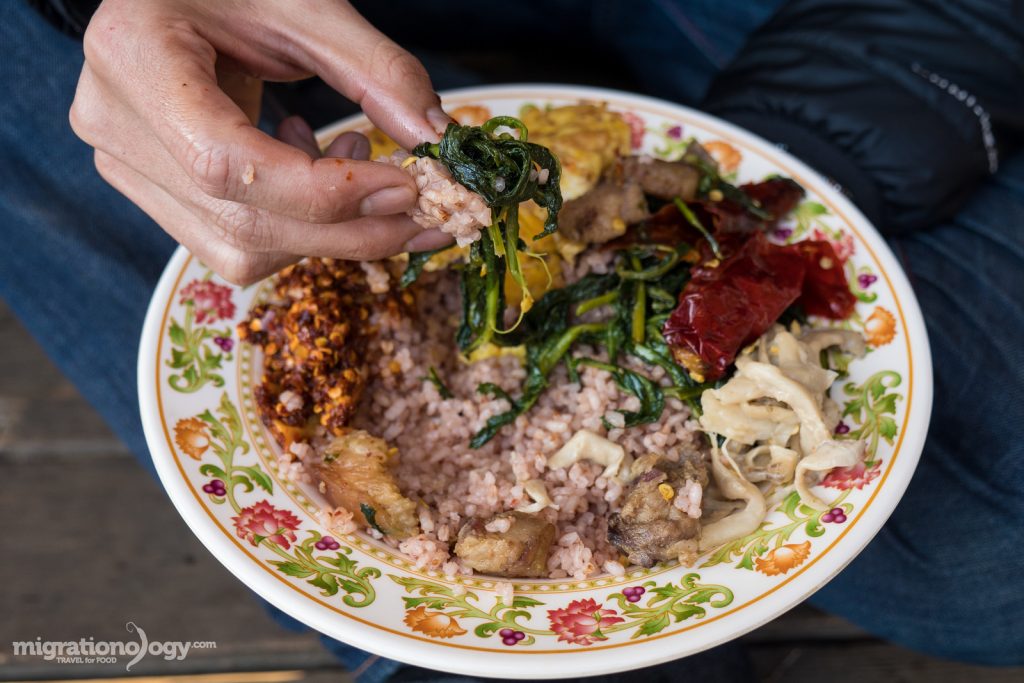
(Tip: if you are visiting someone's house for the first time don't go empty handed, many believe it to be a bad omen and some just find it disrespectful!)
Food Habits: An average foreigner may find Bhutanese food too spicy to eat, while eating at restaurants make sure you clarify the level of spice or just ask for a less spicy version. The national food, which people eat on a regular basis, is known as ema datsi: Ema means chili and datsi is a locally produced cheese. So, it is literally just cheese and chilli!
Majority of the Bhutanese population do not suffer from severe food allergy, so remember to clearly and specifically state all your allergens before you eat. Always carry EpiPens, allergy medications, and any other prescribed medicines with you, just in case of an emergency.
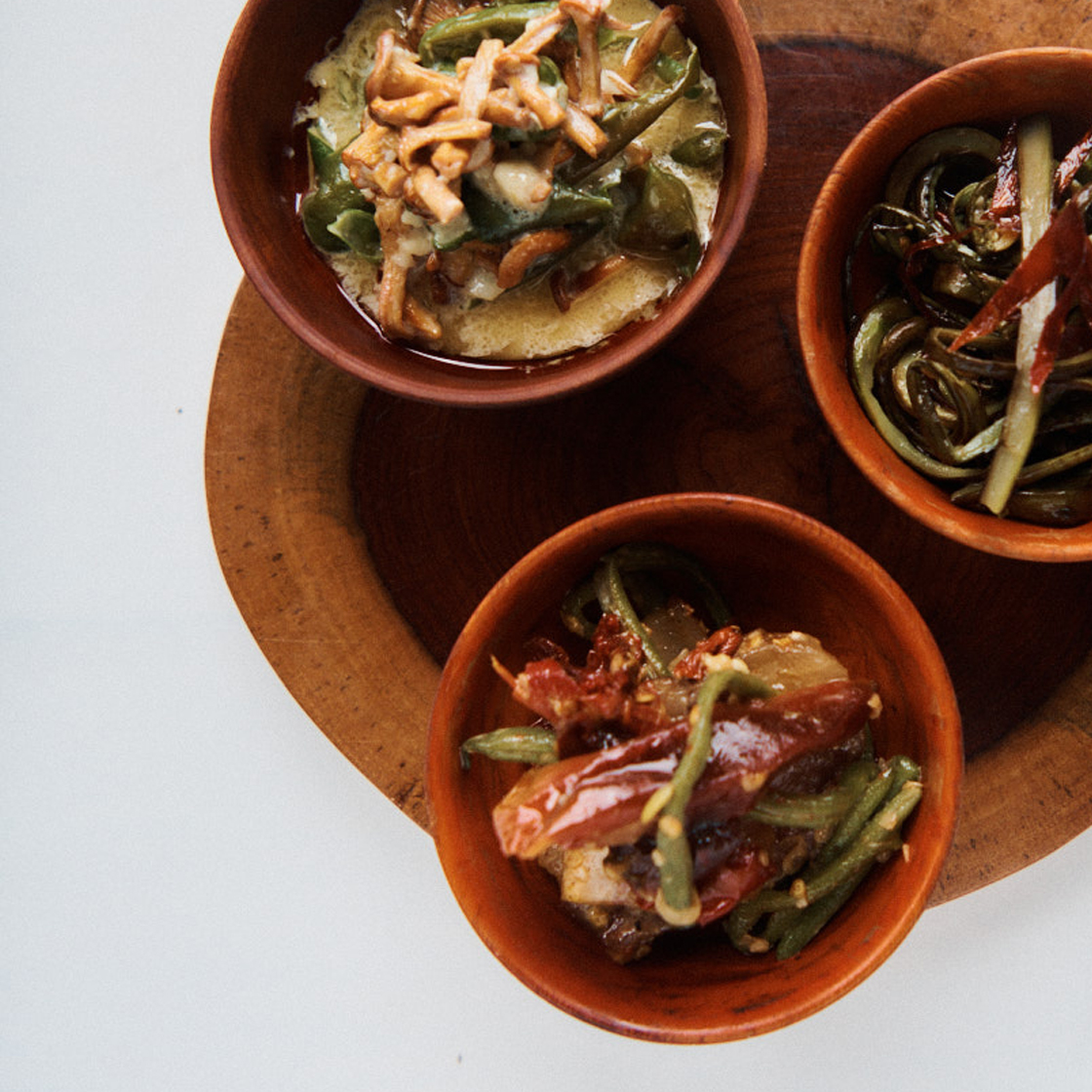
Sim cards: Tourists can get their sim cards from the airport or from a local Bmobile or Tashicell (Network carrier) outlet.
Medical Assistance: Hospitals in Bhutan are equipped with a limited number of medical doctors, personnel, and medical equipment. Therefore, visitors are advised to bring their own prescription and other medication with them, as supplies in the country may vary.
- Emergency contact numbers:
- Police: 113
- Ambulance: 112
Currency
Cash: The majority of the shops & restaurants do not accept cards of any kind in Bhutan. Make sure you bring cash to change at the airport or at the local bank. Apart from the Bhutanese currency Ngultrum, the widely accepted currency is the Indian Rupee. For your convenience, you can download the goBoB on your phone:
goBoB is a virtual wallet powered by Bank of Bhutan Limited through which a user can store his or her money for future online/offline transactions such as making utility bill payments and merchant payments. Its main objective is to achieve greater financial inclusion, promote cashless transactions and to bring every citizen into the financial ecosystem. The warm service they provide is much appreciated.
